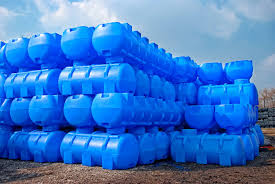Rotational molds, commonly referred to as rotomolding is a flexible and effective manufacturing process utilized to produce hollow plastic products. This method is widely used to create a variety of items, ranging from massive vessels and tanks to elaborate toys and automobile components. Here’s a comprehensive description of the procedure, its advantages, and the uses.
The Rotational Molding Process
Rotational Molding is the process of heating up a plastic material inside a hollow mold before rotating the mold on multiple directions. The process starts with the inserting of a particular amount of liquid resin or plastic powder into the mold. It is closed and then heated, typically by using an oven. The temperature increases and the plastic melts and adheres to the mold’s internal surfaces.
The mold’s rotation ensures the plastic material is evenly coated over the entire surface of the mold and creates a uniform wall thickness. After heating the mold, it’s usually cooled with water or air which helps to solidify the plastic. Once cooled, the mold is opened and the final product is taken out. This process allows for intricate shapes and smooth finishes, often requiring minimal post-production finishing.
Advantages of Rotational Molding
Flexible Design: Rotational molding is ideal to create intricate and complex designs that are expensive or difficult to create using other methods. The process is able to produce components that have different wall thicknesses, complicated geometries, and features that are integrated, such as handles and ribs.
Durability: Products made through the process of rotomolding are renowned for their durability and strength. The even distribution of plastic within the mold creates an unidirectional, stress-free structure that is able to withstand the harshest conditions.
Cost-Effectiveness: In comparison to other manufacturing processes, such as injection molding, rotomolding is generally more cost-effective when it comes to producing large hollow parts, especially for medium-sized to low production runs. The molds utilized in rotomolding are generally cheaper and easier to manufacture.
Productivity: This method allows the use of a variety of plastics, such as polypropylene, polyethylene, and nylon. Additionally, because the plastic is melted and then cooled to a minimum, there is a minimal amount of loss of material compared to other methods.
Applications of Rotational Molding
Rotational molding is employed across various industries due to its broad range of applications. In the industrial field, it’s used to create huge storage tanks, chemical containers, and playground equipment. In the automobile industry, rotomolding creates parts like bumpers and panels. It’s also prevalent in consumer goods like kayaks, coolers, as well as outdoor furniture.
In the end the rotational molding technique is a strong and flexible manufacturing method which has many advantages in creating high-end, durable, and complex plastic products. The ability to work with a variety of styles and materials makes it a valuable process in a wide range of industrial and consumer applications.

